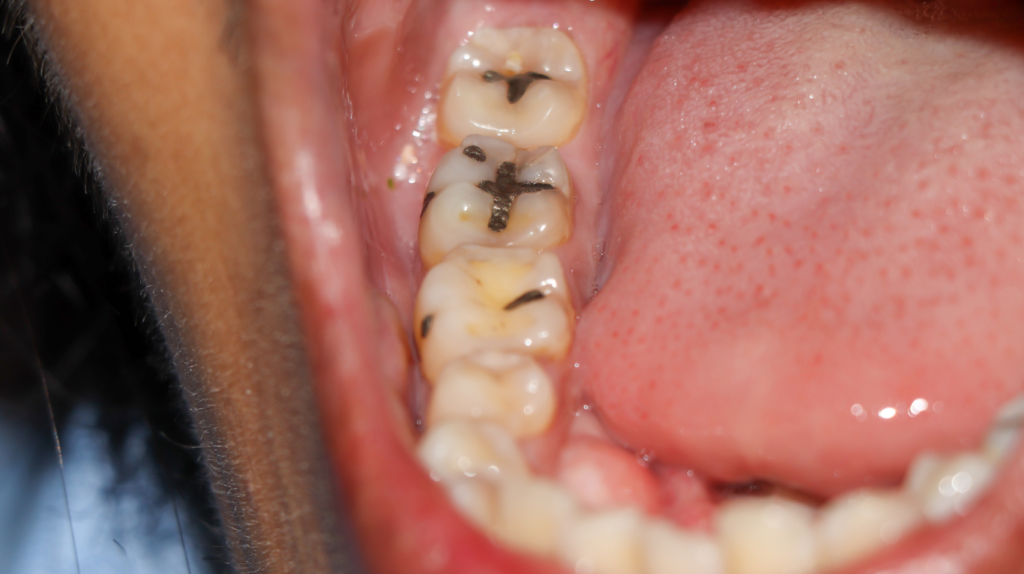Crooked Teeth: What You Need to Know

- smile4u_admin
- August 10, 2023
- 2:13 pm
- No Comments
Crooked teeth are a common problem that affects people of all ages. They can be caused by a variety of factors, including genetics, thumb sucking, and tongue thrusting. Crooked teeth can have a negative impact on your appearance, oral health, and self-confidence.
What are Crooked Teeth?
Crooked teeth are teeth that are not aligned properly. They may be crowded, spaced out, or rotated. Crooked teeth can also be misaligned in relation to the jaw.
What Causes Crooked Teeth?
There are many factors that can cause crooked teeth, including:
Genetics: Crooked teeth can be hereditary. If your parents or siblings have crooked teeth, you are more likely to have them as well.
Jaw size: If your jaw is too small for your teeth, your teeth may crowd together or grow crookedly.
Tongue thrusting: Thrusting your tongue against your teeth when you swallow can push your teeth out of alignment.
Thumb sucking: Thumb sucking can also cause crooked teeth.
Early loss of baby teeth: If your baby loses a milk tooth too early, the other teeth may shift into the space, causing crookedness.
Trauma: If you have suffered a facial injury, it can damage your teeth and jaw, leading to crookedness.
What are the Effects of Crooked Teeth?
Crooked teeth can have a number of effects, both physical and psychological. Some of the physical effects of crooked teeth include:
Difficulty in chewing: Crooked teeth can make it difficult to chew food properly, leading to nutritional deficiencies.
Gum disease: Crooked teeth can make it difficult to clean them, increasing your risk of gum disease.
Tooth decay: Crooked teeth can put more stress on the teeth, which can make them more susceptible to tooth decay.
Speech problems: Crooked teeth can interfere with speech, making it difficult to pronounce certain sounds.
Jaw pain: Crooked teeth can put a strain on the jaw muscles, which can lead to pain.
Temporomandibular joint disorder (TMJ): TMJ is a condition that affects the joint that connects the lower jaw to the skull. Crooked teeth can put stress on the TMJ, which can lead to pain and other symptoms.
Some of the most common psychological effects of crooked teeth include:
Low self-esteem: Crooked teeth can make people self-conscious about their smile, leading to low self-esteem.
Avoidance of social situations: People with crooked teeth may avoid social situations out of fear of being judged.
Reduced confidence: Crooked teeth can reduce a person’s confidence in appearance.
Why is it Important to Treat Crooked Teeth?
There are a number of reasons why it is important to treat crooked teeth. Some of the most important reasons include:
To improve oral health: Crooked teeth can make it difficult to clean between the teeth, which can increase the risk of gum disease. Straightening the teeth can make it easier to clean, which can help to prevent gum disease and tooth decay.
To improve function: Crooked teeth can make it difficult to chew food properly, which can lead to nutritional deficiencies. Straightening the teeth can improve chewing function, which can help ensure you get the nutrients you need from your food.
To improve appearance: Crooked teeth can make people feel self-conscious about their smile, which can lead to low self-esteem. Straightening the teeth can improve the appearance of the smile, which can boost self-confidence and improve social interactions.
To prevent other problems: Crooked teeth can put stress on the jaw muscles and temporomandibular joint (TMJ), which can lead to pain and other problems. Straightening the teeth can help to relieve this stress and prevent other problems from developing.
Types of Treatment for Crooked Teeth.
There are a number of different types of treatment available for crooked teeth. The best treatment for you will depend on the severity of your case and your individual needs.
Braces: Braces are the most common type of treatment for crooked teeth. They use brackets and wires to slowly move the teeth into their correct position.
There are many different types of braces available. Here are some of the most common types of braces:
Traditional braces: These are the most common type of braces. They use brackets and wires to move the teeth into the correct position. Traditional braces are made of metal, but they are also available in clear or ceramic materials.
Lingual braces: These braces are placed on the back of the teeth so they are not visible when you talk or smile. Lingual braces can be more difficult to adjust than traditional braces, but they are also less visible.
Self-ligating braces: These braces use a different type of mechanism to hold the wires in place, which can make them more comfortable to wear. Self-ligating braces can also be more effective than traditional braces in some cases.
Clear aligners: Clear aligners are another clear alternative to braces. They are made of a clear plastic material that is worn over the teeth. It uses a series of clear aligners to move the teeth into their correct position.
If you are concerned about crooked teeth, it is important to see our experienced orthodontist. They can assess your case and recommend the best treatment for you. With the right treatment, you can have a straighter, healthier smile that you will be proud of. Visit Smile 4u Family dental clinic to get the best orthodontic treatment in Kurla, Mumbai.
Recent Posts
-
 Understanding Root Canal Therapy: Myths vs. Facts
Understanding Root Canal Therapy: Myths vs. Facts -
 Preventing Tooth Decay: Dos and Don'ts
Preventing Tooth Decay: Dos and Don'ts -
 The Importance of Regular Dental Check-ups
The Importance of Regular Dental Check-ups -
 Gum Disease: Understanding, Preventing, and Treating
Gum Disease: Understanding, Preventing, and Treating -
 Making Dental Visits a Cakewalk for Kids: Conscious Sedation (Laughing Gas) for Comfortable, Painless, and Safe Treatment
Making Dental Visits a Cakewalk for Kids: Conscious Sedation (Laughing Gas) for Comfortable, Painless, and Safe Treatment
